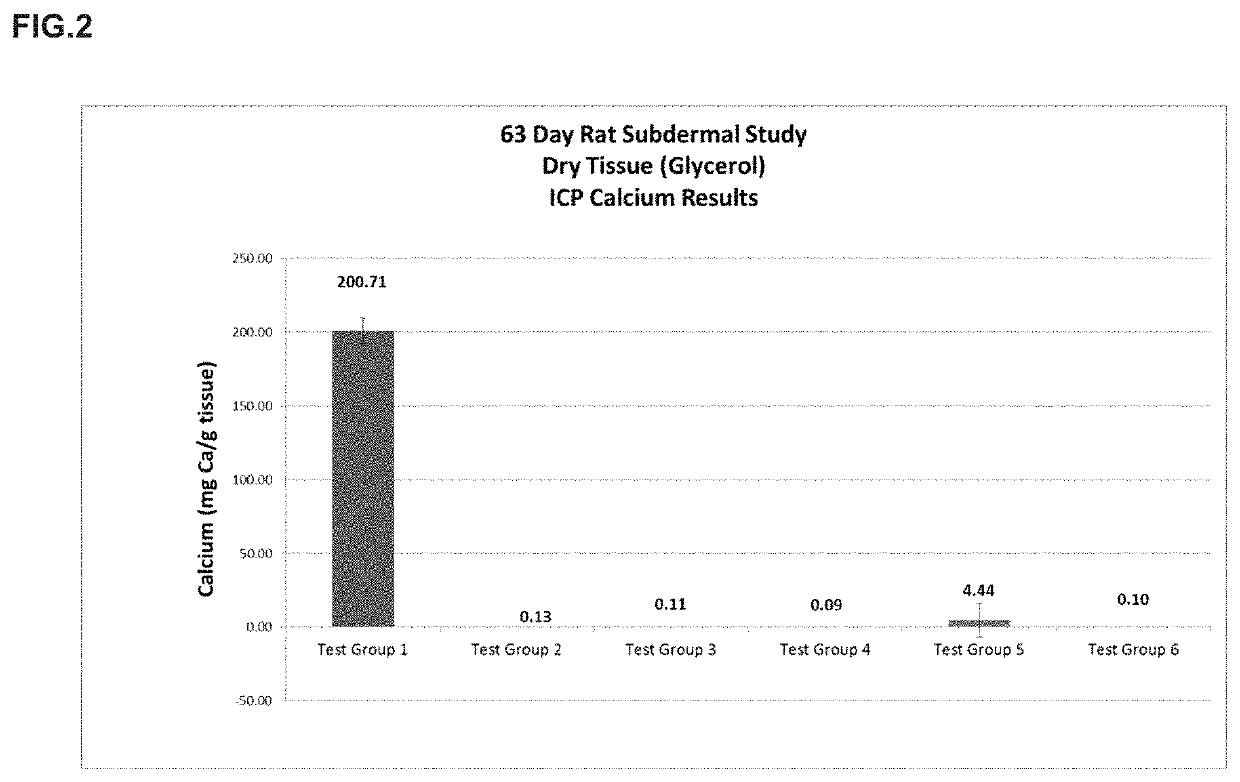Method of preparing calcification-resistant bioprosthetic tissue
a bioprosthetic tissue and calcification-resistant technology, applied in the field of prosthetic heart valves and prosthetic heart valves, can solve the problems of device failure, inability to implant bioprosthetic devices, and certain components of bioprosthetic tissue, so as to reduce cytotoxicity and reduce cytotoxicity without impairing mechanical strength.
- Summary
- Abstract
- Description
- Claims
- Application Information
AI Technical Summary
Benefits of technology
Problems solved by technology
Method used
Image
Examples
Embodiment Construction
[0021]Before describing at least one embodiment of the present disclosure in detail, it is to be understood that the present disclosure is not limited in its application to the details set forth in the following description or exemplified by the examples. Aspects of the present disclosure are capable of other embodiments or of being practiced or carried out in various ways. Also, it is to be understood that the phrasing and terminology employed herein is for the purpose of description and should not be regarded as limiting.
[0022]The present disclosure provides a method of preparing bioprosthetic tissue or a bioprosthetic device comprising such tissue so as to have strong calcification resistance and allow for sterilization and storage in a non-toxic environment without causing damage to the tissue. Bioprosthetic valves, which are also generally known as “tissue valves,” are prosthetic valves made with at least some tissue of biological origin. “Biological tissue” or “tissue,” as use...
PUM
| Property | Measurement | Unit |
|---|---|---|
| temperature | aaaaa | aaaaa |
| temperature | aaaaa | aaaaa |
| wt % | aaaaa | aaaaa |
Abstract
Description
Claims
Application Information
 Login to View More
Login to View More - R&D
- Intellectual Property
- Life Sciences
- Materials
- Tech Scout
- Unparalleled Data Quality
- Higher Quality Content
- 60% Fewer Hallucinations
Browse by: Latest US Patents, China's latest patents, Technical Efficacy Thesaurus, Application Domain, Technology Topic, Popular Technical Reports.
© 2025 PatSnap. All rights reserved.Legal|Privacy policy|Modern Slavery Act Transparency Statement|Sitemap|About US| Contact US: help@patsnap.com


